Counting down to midnight is no big deal on any other night except for New Year’s Eve! This is the one night of the year where people get to truly throw out the old and welcome in the new with open arms! Here in America, we are all aware of the famous ball drop and flying confetti in New York City but have you ever thought about what New Year’s Eve means for people around the world? Just like any other holiday, New Year’s Eve brings different traditions and celebration styles from people in countries all over the world.
1. Scotland
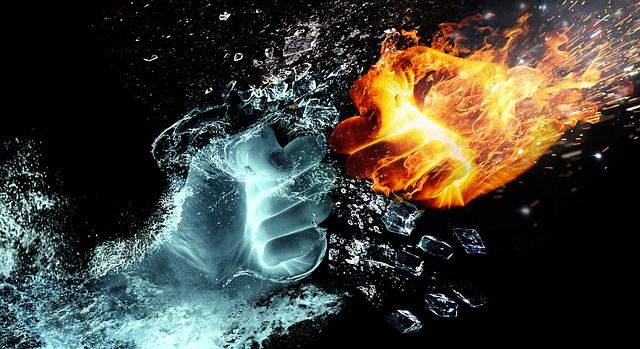 While in New York City the confetti is falling, people are cheering, and the ball is making its descent down to the ground, in Scotland they are celebrating the end of the year in a much more different way! The Hogmanay Fire Festival is one of the most famous New Year’s Eve festivals for residents of Scotland.In Stonehaven, right before midnight, a parade of a trained professionals swing balls of fire over their head and then tosses them into the sea. Nobody is positive how this hot and fiery ritual started exactly but every year the tradition is held.
While in New York City the confetti is falling, people are cheering, and the ball is making its descent down to the ground, in Scotland they are celebrating the end of the year in a much more different way! The Hogmanay Fire Festival is one of the most famous New Year’s Eve festivals for residents of Scotland.In Stonehaven, right before midnight, a parade of a trained professionals swing balls of fire over their head and then tosses them into the sea. Nobody is positive how this hot and fiery ritual started exactly but every year the tradition is held.
There are a few meanings behind this tradition that dates back over 100 years. Many people believe that this tradition could be based on a Pre-Christian ritual meant to purify and ward off evil spirits. Others speculate that since the timing of the festival is so close to the winter solstice, the fireballs actually represent and symbolize the sun.
2. Ireland
 In Ireland if you are single and looking for love you place mistletoe under your pillow on December 31st. It is said that by doing this your luck is about to change and you will find love in the New Year.
In Ireland if you are single and looking for love you place mistletoe under your pillow on December 31st. It is said that by doing this your luck is about to change and you will find love in the New Year.
3. Siberia
 We have all heard of the frigid polar plunge that makes us shiver just thinking about it! In Siberia however, they take plunging into the New Year one step farther!People who are brave enough to dive deep into the dark frozen water of a lake plant New Year’s Trees underneath the frozen ice caps.The trees are supposed to signify the coming of Father Frost but it also tends to symbolize staring over and beginning anew.
We have all heard of the frigid polar plunge that makes us shiver just thinking about it! In Siberia however, they take plunging into the New Year one step farther!People who are brave enough to dive deep into the dark frozen water of a lake plant New Year’s Trees underneath the frozen ice caps.The trees are supposed to signify the coming of Father Frost but it also tends to symbolize staring over and beginning anew.
4. Myanmar (Burma)
 Contrary to the use of fire in Scotland, Burmese people mark the New Year with their famous Thingyan water Festival! Instead of New Year’s Eve taking place on the night of December 31st, this tradition usually takes place mid-April. Thagyamin is a celestial Buddhist figure and the water festival marks his arrival on earth. The streets are usually filled with sprinklers and people celebrating as well as the firing of many water cannons. The water in this tradition is meant to “wash away” the bad luck and sins the previous year brought. The washing begins anew for the people of Burma.
Contrary to the use of fire in Scotland, Burmese people mark the New Year with their famous Thingyan water Festival! Instead of New Year’s Eve taking place on the night of December 31st, this tradition usually takes place mid-April. Thagyamin is a celestial Buddhist figure and the water festival marks his arrival on earth. The streets are usually filled with sprinklers and people celebrating as well as the firing of many water cannons. The water in this tradition is meant to “wash away” the bad luck and sins the previous year brought. The washing begins anew for the people of Burma.
5. Spain
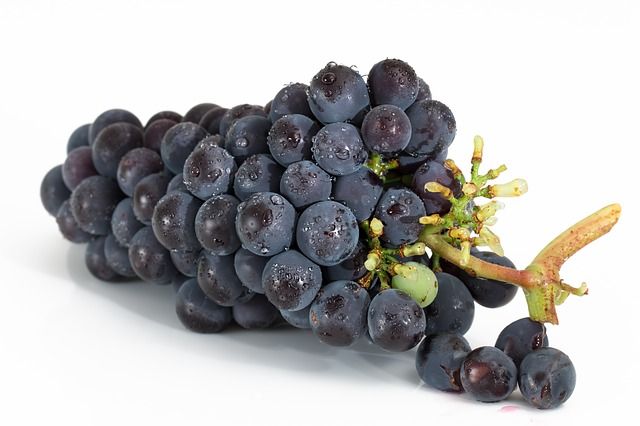 If you are traveling to Spain for the holidays you better have a love for grapes! In Spain it’s a tradition to fill your mouth with 12 grapes at the stroke of midnight. Once the clock strikes 12, you add one grape for each second. This is for good luck in the New Year. The 12 grapes represent each month of the year. These juicy, little, fruits must all be eaten right at the stroke of midnight to count. Beware, if someone fails to eat all 12 grapes, this is considered bad luck!
If you are traveling to Spain for the holidays you better have a love for grapes! In Spain it’s a tradition to fill your mouth with 12 grapes at the stroke of midnight. Once the clock strikes 12, you add one grape for each second. This is for good luck in the New Year. The 12 grapes represent each month of the year. These juicy, little, fruits must all be eaten right at the stroke of midnight to count. Beware, if someone fails to eat all 12 grapes, this is considered bad luck!
6. Brazil
 In Brazil Iemanja is a pagan Afro- Brazilian Goddess of the sea and many believe in wearing white as well as throwing white flowers and candles to the sea as an offering on New Year’s Eve. If the ocean returns your gifts back to you, this means the goddess did not accept. There are no penalties for a rejected gift however. The white flowers and candles are meant to please the goddess who is known for blessing mothers and children. Offerings are also meant to bring prosperity to the New Year.
In Brazil Iemanja is a pagan Afro- Brazilian Goddess of the sea and many believe in wearing white as well as throwing white flowers and candles to the sea as an offering on New Year’s Eve. If the ocean returns your gifts back to you, this means the goddess did not accept. There are no penalties for a rejected gift however. The white flowers and candles are meant to please the goddess who is known for blessing mothers and children. Offerings are also meant to bring prosperity to the New Year.
7. China
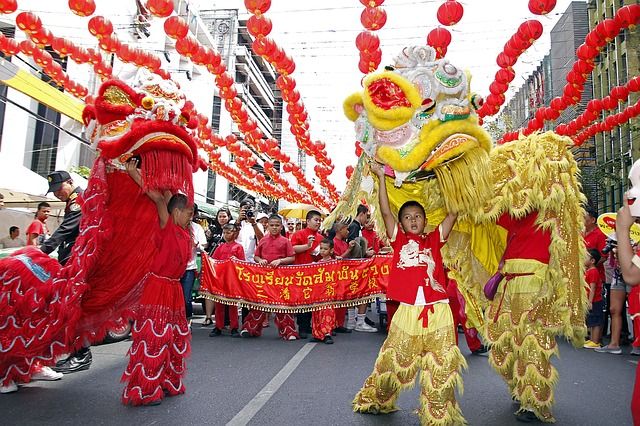 While here in American, when we think of New Year’s Eve, the traditional colors that come to mind are black, gold, or silver. In China, the color that best signifies the New Year is red! The Chinese New Year is not traditionally held on January 1st like it is here in America. Instead it is usually held midway through the month of February. In china painting your door or hanging red cutouts in your windows is looked upon as a sign of good luck for the coming year. The color red is seen in China as the happiest and luckiest color making it worn and displayed proudly for important events and celebrations.
While here in American, when we think of New Year’s Eve, the traditional colors that come to mind are black, gold, or silver. In China, the color that best signifies the New Year is red! The Chinese New Year is not traditionally held on January 1st like it is here in America. Instead it is usually held midway through the month of February. In china painting your door or hanging red cutouts in your windows is looked upon as a sign of good luck for the coming year. The color red is seen in China as the happiest and luckiest color making it worn and displayed proudly for important events and celebrations.
8. Denmark
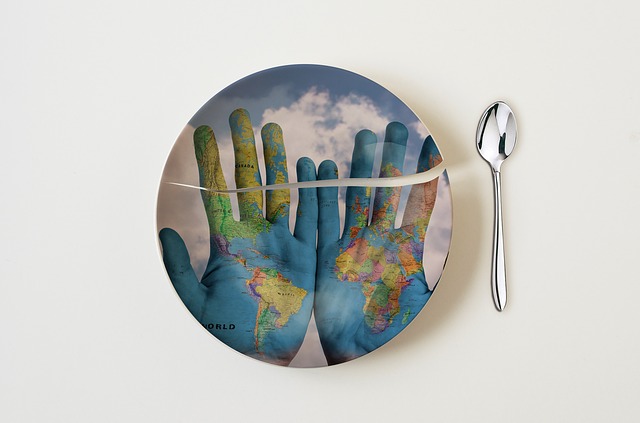 Contrary to what you may think, broken plates are actually seen as a sign of good luck in Denmark! This leads to a one of a kind ritual of breaking already broken or unused plates. Once the plates are broken and smashed, they are then dropped on the porches and front steps of family and friends to bring in good luck all year long. While it may be a mess to clean up, the bigger the pile of broken glass the better! Large piles of glass are seen as a person being popular and well liked.
Contrary to what you may think, broken plates are actually seen as a sign of good luck in Denmark! This leads to a one of a kind ritual of breaking already broken or unused plates. Once the plates are broken and smashed, they are then dropped on the porches and front steps of family and friends to bring in good luck all year long. While it may be a mess to clean up, the bigger the pile of broken glass the better! Large piles of glass are seen as a person being popular and well liked.
9. Colombia
 Columbia has their very own tradition for the New Year. The people of Colombia take the time to make large puppets or scarecrows that look similar to the people they dislike or someone who has passed away in the previous year. These puppets and scarecrows are then lit on fire on New Year’s Night to burn away the bad in the past and start fresh for the New Year!
Columbia has their very own tradition for the New Year. The people of Colombia take the time to make large puppets or scarecrows that look similar to the people they dislike or someone who has passed away in the previous year. These puppets and scarecrows are then lit on fire on New Year’s Night to burn away the bad in the past and start fresh for the New Year!
10. Japan
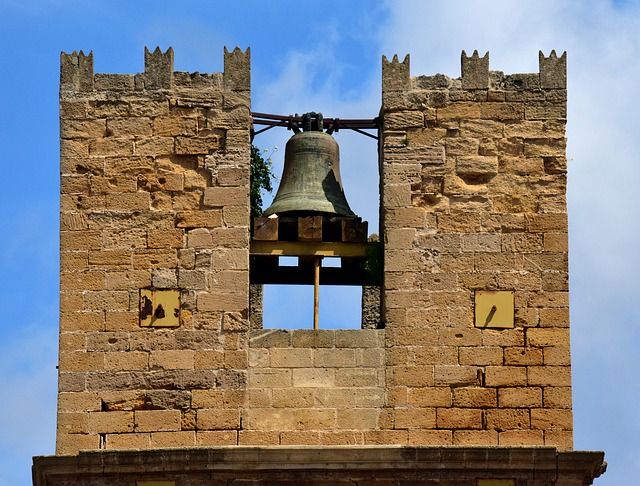 Let’s hope you aren’t trying to sleep on New Year’s Eve night in Japan! The people of Japan have a traditional bell ringing ceremony called Joya no kane that takes plan on New Year’ Eve. The bells are rung 108 times and represent the worldly desires or sin of the Buddhist religion. These ceremonies are traditionally held at Buddhist temples.
Let’s hope you aren’t trying to sleep on New Year’s Eve night in Japan! The people of Japan have a traditional bell ringing ceremony called Joya no kane that takes plan on New Year’ Eve. The bells are rung 108 times and represent the worldly desires or sin of the Buddhist religion. These ceremonies are traditionally held at Buddhist temples.
11. Germany
 If doughnuts are one of your favorite treats then Germany is where you want to be for New Years’ Eve! The German word For New Year’ Eve is Silvester and having doughnuts to eat used to only available on special events such as the New Year. These tiny pastries used to be a rare and highly expensive treat that may people were not able to afford.These sweet and savory treats are typically filled with fruit or chocolate filling. Sometimes, if you wanted to play a prank on family and friends, the doughnuts would be filled with mustard for the unsuspecting victim to take a bit of!
If doughnuts are one of your favorite treats then Germany is where you want to be for New Years’ Eve! The German word For New Year’ Eve is Silvester and having doughnuts to eat used to only available on special events such as the New Year. These tiny pastries used to be a rare and highly expensive treat that may people were not able to afford.These sweet and savory treats are typically filled with fruit or chocolate filling. Sometimes, if you wanted to play a prank on family and friends, the doughnuts would be filled with mustard for the unsuspecting victim to take a bit of!
12. Italy
 Similar to the tradition of giving someone a big smooch on New Year’s Eve here in America, people in Italy have their own tradition for being lucky in love in the New Year. In Italy, red is seen as the color of love and fertility. This has led to a common tradition of wearing bright red undergarments on the night of New Year’s Eve.In Argentina, if you wear pink undergarments you are looking for love in the New Year!
Similar to the tradition of giving someone a big smooch on New Year’s Eve here in America, people in Italy have their own tradition for being lucky in love in the New Year. In Italy, red is seen as the color of love and fertility. This has led to a common tradition of wearing bright red undergarments on the night of New Year’s Eve.In Argentina, if you wear pink undergarments you are looking for love in the New Year!
13. South Africa
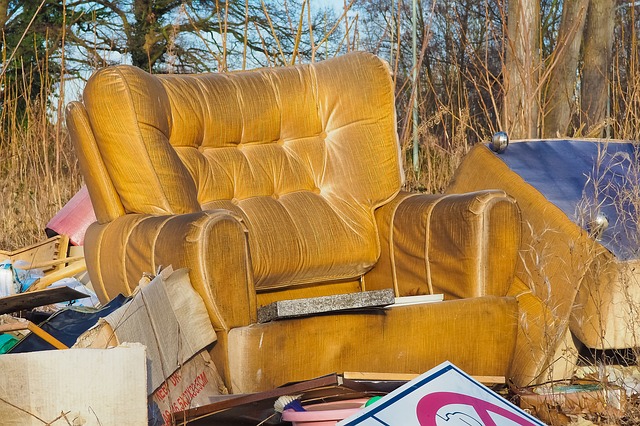 The people of South Africa really take “out with the old and in with the new” seriously! In Hillbrow, Johannesburg the tradition used to be throwing out furniture from tall buildings. This has since been condemned as hazardous and is no longer as popular as it once was. The throwing of the furniture was seen as a symbolic way of throwing out old problems and starting off with a fresh start. When this tradition used to be popular, it was common for residents to stockpile and hoard old household items such as couches, chairs and more in preparation for this event.
The people of South Africa really take “out with the old and in with the new” seriously! In Hillbrow, Johannesburg the tradition used to be throwing out furniture from tall buildings. This has since been condemned as hazardous and is no longer as popular as it once was. The throwing of the furniture was seen as a symbolic way of throwing out old problems and starting off with a fresh start. When this tradition used to be popular, it was common for residents to stockpile and hoard old household items such as couches, chairs and more in preparation for this event.
14. Greece
 In Greece, New Year’s Eve is typically known as Protochronia. The common way to bring in the New Year for the people of Greece is by hanging onions on their doors. This signifies rebirth and regrowth. This tradition stems from the squill, also known as the sea onion. The squill is a poisonous plant that resembles a large onion. This plant is known for growing in Crete and once the plant is uprooted, it’s been known to continue to grow new leaves as well as flowers. When onions are placed on the doors in Greece it’s believed that some of the plants resilience and good luck will rub off on the people living in the household.
In Greece, New Year’s Eve is typically known as Protochronia. The common way to bring in the New Year for the people of Greece is by hanging onions on their doors. This signifies rebirth and regrowth. This tradition stems from the squill, also known as the sea onion. The squill is a poisonous plant that resembles a large onion. This plant is known for growing in Crete and once the plant is uprooted, it’s been known to continue to grow new leaves as well as flowers. When onions are placed on the doors in Greece it’s believed that some of the plants resilience and good luck will rub off on the people living in the household.
15. Chile
 Chile celebrates ringing in the New Year in a similar manner of Mexico’s Day of the Dead festival. Family members that have passed away are not forgotten when welcoming in the New Year in the region of Talca Chile. Entire families will celebrate the New Year while gathering in the cemeteries with members who have passed away.
Chile celebrates ringing in the New Year in a similar manner of Mexico’s Day of the Dead festival. Family members that have passed away are not forgotten when welcoming in the New Year in the region of Talca Chile. Entire families will celebrate the New Year while gathering in the cemeteries with members who have passed away.
16. Estonians
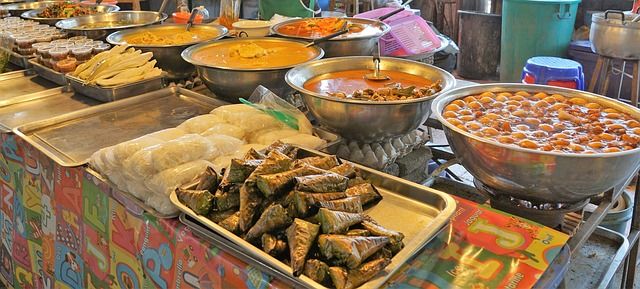 Estonians are all about the food for New Year’s Eve! It is not uncommon to eat up to 12 times on New Year’s Eve. The numbers 7, 9, and 12 are all considered good luck in the Estonian culture. If a person eats that many time on New Year’s, it is believed that they will have the strength and the prosperity of 7, 9, or 12 people in the upcoming year.
Estonians are all about the food for New Year’s Eve! It is not uncommon to eat up to 12 times on New Year’s Eve. The numbers 7, 9, and 12 are all considered good luck in the Estonian culture. If a person eats that many time on New Year’s, it is believed that they will have the strength and the prosperity of 7, 9, or 12 people in the upcoming year.
No matter how you go about celebrating the coming of the New Year, one thing always remains the same. People hope love, prosperity, and good fortune is brought to them at the start of the New Year. It’s a time for a fresh start and the beginning of something new all around the world no matter how you celebrate. This year, check out celebrating New Year’s Eve in a way other than what is traditional to you! Take a moment and look over our around the world section to find great party supplies to represent each piece of the world you would like to celebrate!
17. Turkey
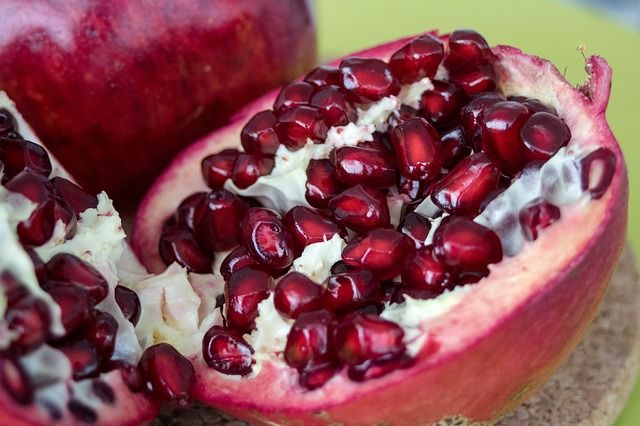 Pomegranates are yummy to eat and are healthy for you! The people of Turkey use these sweet fruits for a whole other meaning however. When you open a pomegranate on New Year’s Eve in Turkey, it signifies wealth and prosperity in the coming New Year. While in Armenia, throwing a pomegranate on the floor signifies good luck. The more pieces that land on the floor, the better your success with be! It’s also believe that the color and the shape of this fruit resembles the human heart and is a symbol for life, fertility, and health.
Pomegranates are yummy to eat and are healthy for you! The people of Turkey use these sweet fruits for a whole other meaning however. When you open a pomegranate on New Year’s Eve in Turkey, it signifies wealth and prosperity in the coming New Year. While in Armenia, throwing a pomegranate on the floor signifies good luck. The more pieces that land on the floor, the better your success with be! It’s also believe that the color and the shape of this fruit resembles the human heart and is a symbol for life, fertility, and health.
18. Romania
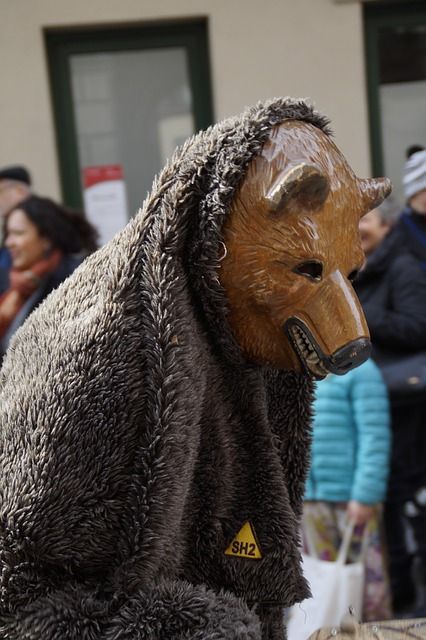 Dressing up as bears and dancing used to be an old Pagan ritual used for warding off bad spirits. This tradition has now become the New Year’s Eve celebration for the Romanian people! Dancers dress up as bears in furs that are native to the Romanian forest. There is also a group to dress up as gypsies who then chain the bears to represent both the death of the old year and the coming of what’s to come in the New Year.
Dressing up as bears and dancing used to be an old Pagan ritual used for warding off bad spirits. This tradition has now become the New Year’s Eve celebration for the Romanian people! Dancers dress up as bears in furs that are native to the Romanian forest. There is also a group to dress up as gypsies who then chain the bears to represent both the death of the old year and the coming of what’s to come in the New Year.